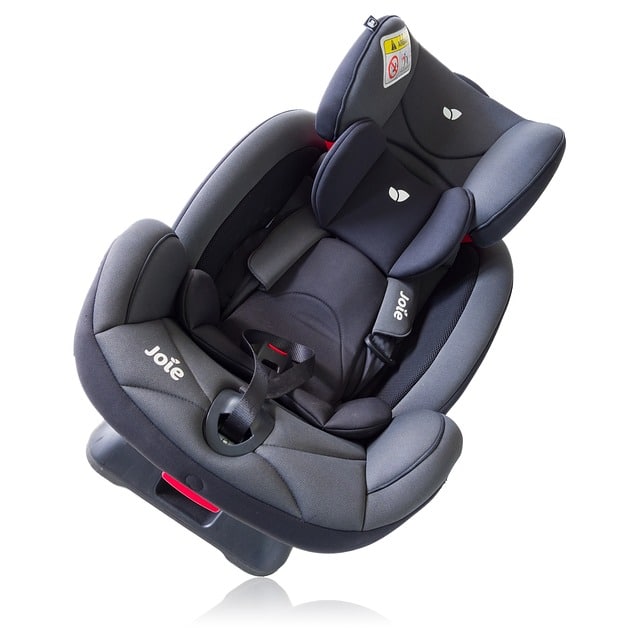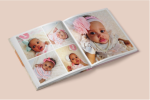Becoming a parent for the first time involves a huge amount of learning and deciding what is most important for your baby. Your shopping list for your baby might be long; but some of the most critical choices will be the choice of your Baby’s car seat.
While you might not know much about purchasing a car seat; it is critical as it is not just a nice to have but a necessary life-saving purchase. There are many child car seats to choose from; and making sure you have the right one is very important.

Child car seats are often divided into categories, which manufacturers often refer to as stages. These stages include, Stage 1 or Groups 0 & 0+, Stage 2 or Group 1, Stage 3 or Group 2; and, lastly, Stage 4 or Group 3. Some child car seats can be converted as your child grows; so it can fit into several stages and/or groups.
Types of Car Seats
The first of the main types of child car seats is the rear-facing baby seat for children who fit into Group 0. These are used from birth to up to 6-9 months and/or for infants weighing up to 22 pounds. They also fit the Group 0+ category since some are made for use from birth up to 12-15 months and/or infants weighing up to 29 pounds.
NewBorn
For this first journey, you’ll need a seat that faces towards the rear of your vehicle.
This provides the best protection in the event of an impact for an infant who is unable yet to support the weight of their head. The seat will be nicely reclined backward, providing a safe and comfortable cocoon for your baby.
It’s important to choose a rear-facing seat that is sturdy and dependable, yet light to carry. Young babies sleep a little and often; and the last thing you want to do after finally getting your child to sleep in a car journey is to wake them by removing them from their warm and cozy seat. Having an easily detachable model that is light to carry means you can ferry your baby from car to house with as little disturbance as possible.
These rear-facing seats are only suitable for younger infants. Once they’ve grown to weigh around 20 pounds; or the top of their head is nearing the upper edge of the seat and thus no longer protected properly, you’ll need to move to a forward-facing seat.
Rear-facing baby car seats are to be used in either the front seat or back seat of an automobile. However, it is known to be safer when they are used in the back seat. Never use rear-facing child car seats in a front passenger seat if it has a passenger-side airbag.
Rear-facing child car seats offer much greater protection for an infant’s head, neck, and also spine. So, it is recommended that you use rear-facing child car seats as long as you can, moving your child into a forward-facing seat only after he/she is too big for the seat’s weight limit or his/her head is higher than the seat’s top.
Babies from 9 months to 4 years old
This brings us to forward-facing child car seats.
These are for children who fit into Group 1, used from 9 months to 4 years of age, or for children weighing 20-40 pounds. As with rear-facing baby car seats, forward-facing child car seats can be used both in the front and back seats; although using it in the back seat is recommended.
These seats are much more upright, but better models can be adjusted to provide a more horizontal position to help your toddler sleep during longer journeys. Because of the upright position, your child must be able to sit up on their own before using this kind of seat. Forward-facing seats are built to last for a fair few years; and most will be good until your child reaches the age of 4 or 6.
A forward-facing child car seat should be used until the child is too big for the seat’s weight limit; and/or the top of the child’s head is higher than the seat’s top.
Lastly, we come to the booster cushion or booster seats.
The booster cushion/seat is used for children ranging from 6 to 11-years-old and weighing from 48 to 79 pounds. As with both the rear-facing and forward-facing child car seats, the booster cushion/seat can be used in both the front and back seats, although the back seat is recommended as safer for your baby.
Neither booster cushions nor booster seats have a harness that is used to hold a child in the correct place. Instead, an adult car seat belt is used to go around both the child and the seat. This means that having the seat belt correctly adjusted is very important.

Read Also [How to Know if your Child is ready for a Booster seat ]
When it comes to choosing child car seats for your baby; you must make sure the one you choose works both for your child and the type of automobile that you drive.
Areas of Concern in Car Seats
While second-hand car seats can be purchased, you should be very careful when buying one that isn’t brand new. This is because there is no way of knowing for sure its history. It may have been involved in an accident at some point in the past; resulting in weaknesses that may not be visible to the naked eye.
These weaknesses could endanger your baby even in a minor accident. You should only buy a used seat when you can be sure of the history; such as when from close friends or family.
Finally, baby car seats shouldn’t be fitted in front seats where an airbag is fitted. In an accident, the inflation of the airbag could cause serious injury or suffocation to a child; so always fit car seats in the rear of the vehicle in this case.


